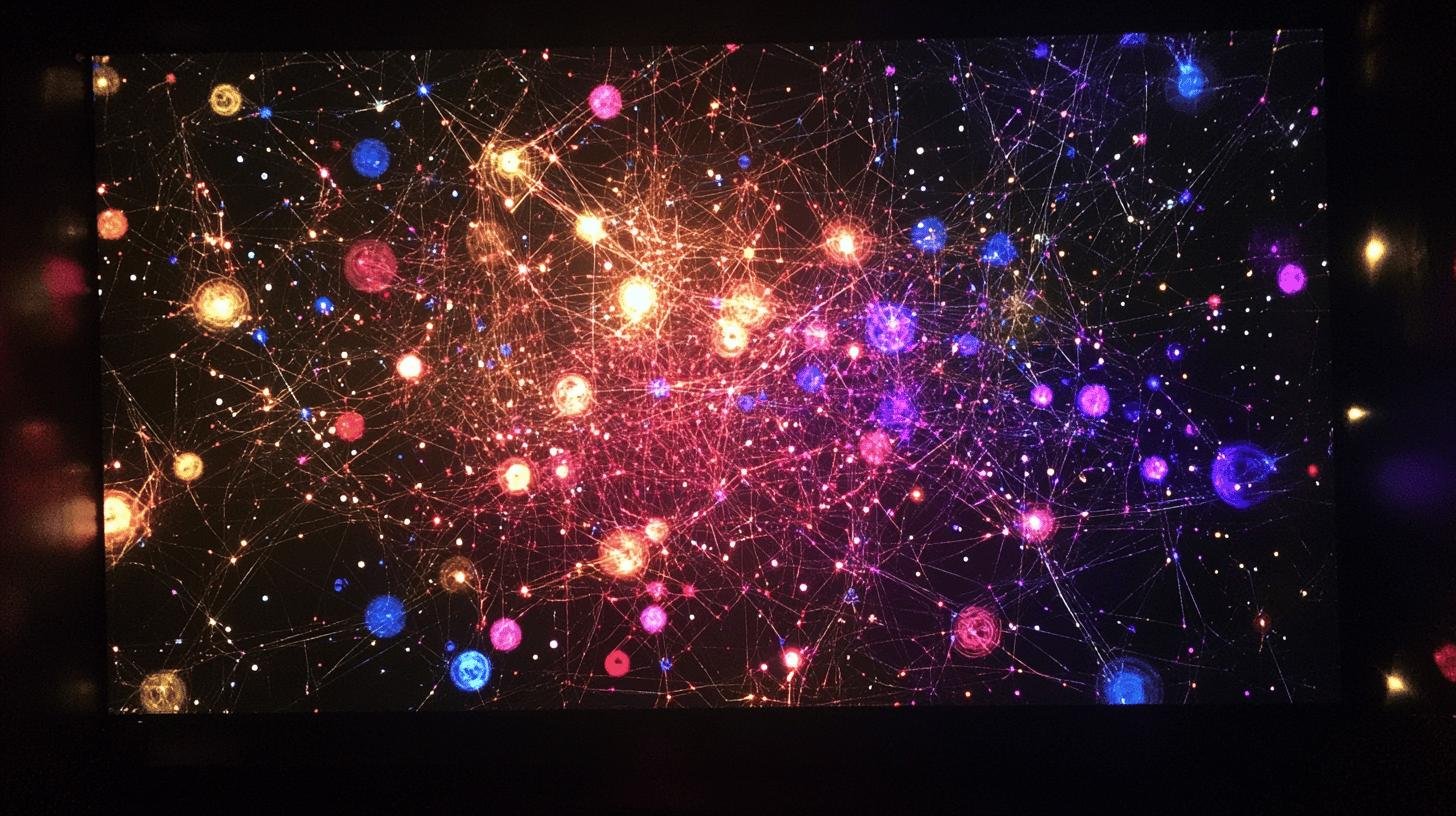Have you ever wondered how machines can spot faces in a sea of photos or help cars drive themselves? Recognition AI is like giving sight to computers, letting them identify patterns and objects just like we do. It’s all about algorithms that play the role of our brain’s image processor. Pretty amazing, right? From mastering facial recognition to steering autonomous vehicles, recognition AI is reshaping our world. Want to know how it all comes together and what magic makes it tick? Let’s find out: How does recognition AI work?
Understanding the Basics of Recognition AI
Recognition AI gives machines the ability to see and think. Its job is to spot patterns and recognize objects, like a smart camera. It uses algorithms, which are like step-by-step guides to process visual data. So, it can look at an image and know what’s in it, much like recognizing a picture of your favorite pizza.
How does recognition AI work? Imagine your brain watching a movie. Your eyes take in images, and your brain processes them to understand the storyline. Recognition AI does something similar. It breaks down images into parts, analyzes them, and figures out their meaning. This process mirrors how our brains recognize faces and objects.
Where is this tech used? Everywhere! From facial recognition unlocking phones to autonomous vehicles navigating streets. Recognition AI is changing many fields. Let’s explore some applications:
- Facial recognition
- Autonomous vehicles
- Image tagging
- Healthcare diagnostics
- Security systems
The Role of Neural Networks in Recognition AI

How does recognition AI works with neural networks. Neural networks are the brains behind recognition AI. They help machines see and understand the world. Picture them as complex webs that process information in layers, each layer more detailed. Deep learning models use these networks to find patterns in data, like pictures of dogs or songs.
1. Convolutional Neural Networks (CNNs)
CNNs are stars in image recognition. Their multi-layered structure excels at finding features in images. It’s like peeling an onion, layer by layer, revealing insights. Each layer extracts traits like edges and textures until the whole picture is clear.
2. Object Detection
Ever wonder how your phone focuses on a face in a photo? That’s object detection! CNNs scan images and spot objects within them. It’s like a digital magnifying glass highlighting important things, from a wandering cat to a car on a highway.
3. Image Classification
After detecting objects, AI classifies them. CNNs excel again, sorting images into categories like “dog” or “car.” It’s like a neat filing system for visual data, helping AI know what it’s seeing.
A few neural networks and their applications:
- CNN: Image recognition and analysis
- RNN: sequence prediction
- GAN: Image generation and editing
Neural networks are the secret behind AI’s intelligence!
How Does Recognition AI Work: Fascinating Insights
Data is the fuel for recognition AI. Without it, AI can’t begin. Imagine learning piano without hearing a song. That’s AI without data. The more data it has, the better it recognizes patterns. Quality counts too. Good data helps train AI accurately, preventing mistakes like mixing up cats and dogs.
How does recognition AI work blending with the need for recognition and training. Machine learning algorithms are stars in AI training. They work hard to teach and improve the AI tools. These algorithms are like recipe books with data-processing instructions. They assign confidence scores, showing how certain AI is about what it sees. Higher scores mean more confidence. As algorithms learn, they adjust these scores to improve accuracy, much like a student improving in school.
Data annotation gets tricky. It’s labeling data, like tagging photos with “cat” or “car.” It helps AI focus on details. But it’s tough work, like labeling every pixel in a picture. If data is mislabeled, AI learns wrongly, leading to errors.
Here’s how AI’s training process goes:
- Data Collection: Gather ample data for learning.
- Annotation: Label data so AI knows what it’s seeing.
- Model Training: Use machine learning algorithms to educate AI.
- Accuracy Testing: Test AI’s performance and adjust.
By following these steps, recognition AI becomes smarter and more valuable.
Real-World Applications and Benefits of Recognition AI

Recognition AI shines in security systems. It monitors airports, stores, and homes. How? By spotting unusual activities and alerting authorities. It acts like a digital watchdog, preventing trouble.
In healthcare, recognition AI acts like a super-vigilant doctor. It scans medical images like X-rays to spot issues the human eye might miss. This quick analysis aids doctors in early diagnosis and treatment, making it life-saving!
In retail, how does recognition AI work? Simple, it is a secret weapon for better customer service. It analyzes shopping patterns, helping businesses understand preferences. Imagine entering a store perfectly arranged for you. AI makes shopping easier and fun.
Five benefits of recognition AI:
- Improved security with quick threat detection
- Enhanced diagnostics in healthcare
- Better insights into customer likes
- Streamlined business operations
- Increased efficiency across industries
These benefits make recognition AI connect the world smarter every day!
Challenges and Ethical Considerations in Recognition AI
One challenge in recognition AI is its need for computational power. Massive computers process data like a brain workout. But all this data needs storage. Think of fitting a library of books into a single room—it’s a squeeze! Large data needs mean more storage, which is tricky and costly.
Privacy is another concern. Recognition AI is like a detective, always watching and analyzing. This raises privacy issues. Imagine someone peeking over your shoulder—AI surveillance can feel like that. There’s a balance between safety and snooping, which mustn’t be crossed.
Ethical standards are vital rules. They ensure AI helps, not harms. Like heroes with ethics, AI needs guidelines to ensure it’s responsible. Balancing innovation and ethics is key to making AI a force for good.
Conclusion
Unraveling How does recognition AI work starts with algorithms that mirror human vision, allowing machines to see patterns. Neural networks, particularly CNNs, lend a hand by dissecting images layer by layer. Training these systems demands high-quality data, with steps from collection to accuracy testing.
In real life, this tech boosts security, healthcare, and more, delivering precise decision-making. Yet, it comes with challenges—like keeping data private and ethical issues around surveillance. It’s a delicate balancing act, but the potential benefits make it all worthwhile.
FAQ
Which AI technique is used for image recognition?
Image recognition uses neural networks like Convolutional Neural Networks (CNNs). They analyze visual data by detecting complex patterns, mimicking human brain functions in processing images.
Can you give examples of image recognition AI?
Sure! Some examples include facial recognition systems, object detection in autonomous vehicles, image tagging on social media, and even medical diagnostics in healthcare.
How accurate is AI image recognition?
The accuracy of AI image recognition depends on data quality and algorithm complexity. High-quality data and sophisticated algorithms generally lead to better accuracy.
How does AI text recognition work?
AI text recognition, or optical character recognition (OCR), converts images of text into digital text. It uses machine learning to improve accuracy by learning from varied fonts and styles.
How does AI face recognition work?
AI face recognition identifies and verifies individuals by analyzing facial features. It uses neural networks to compare facial data with a database of known faces.




